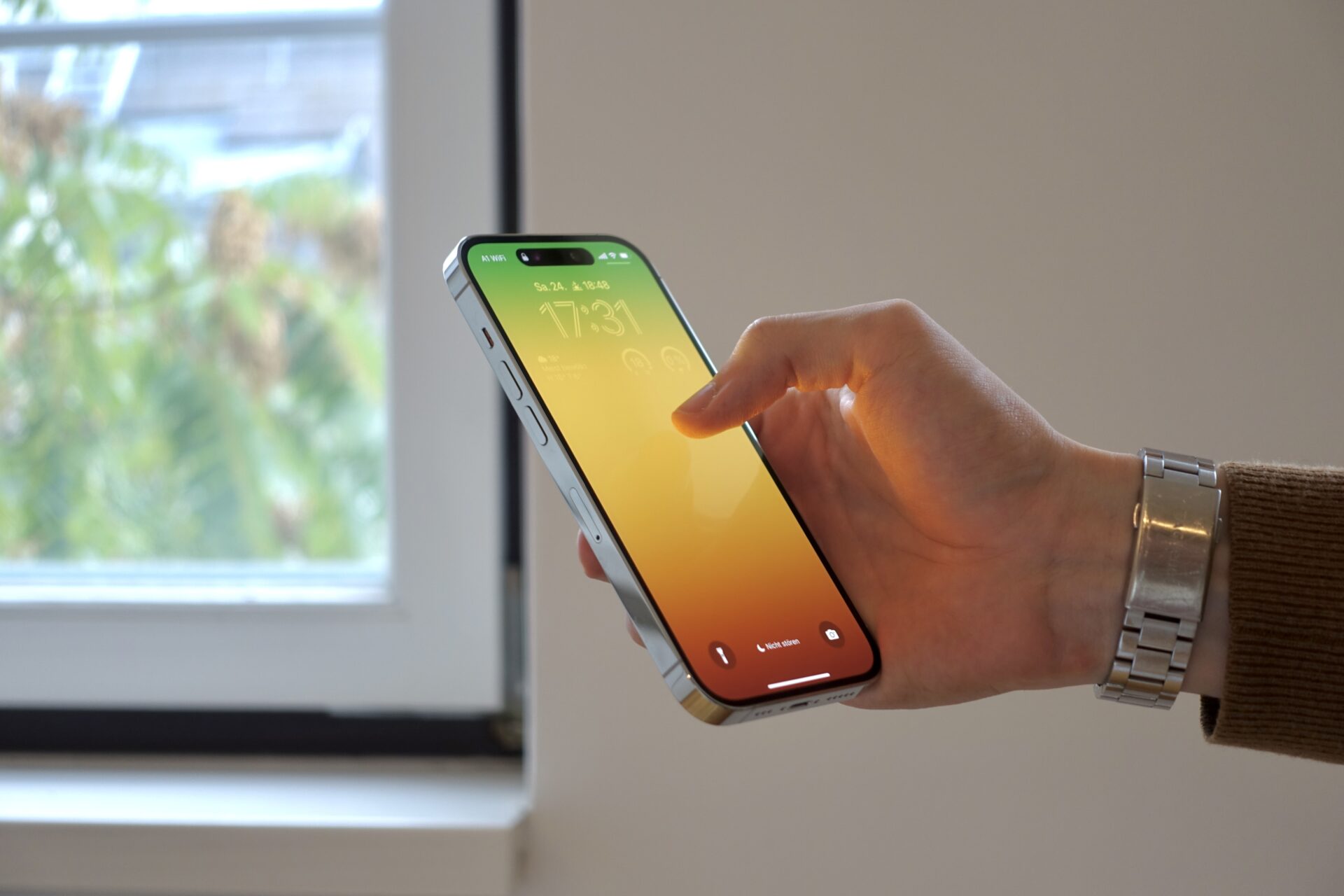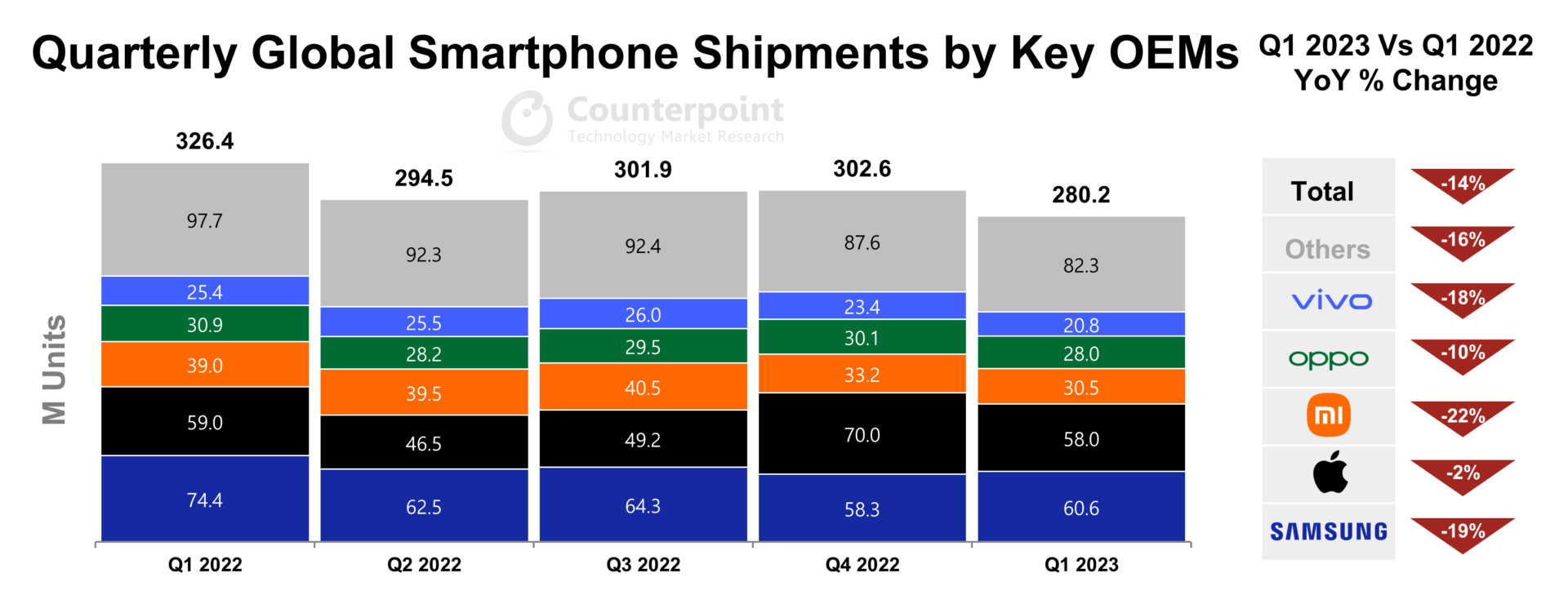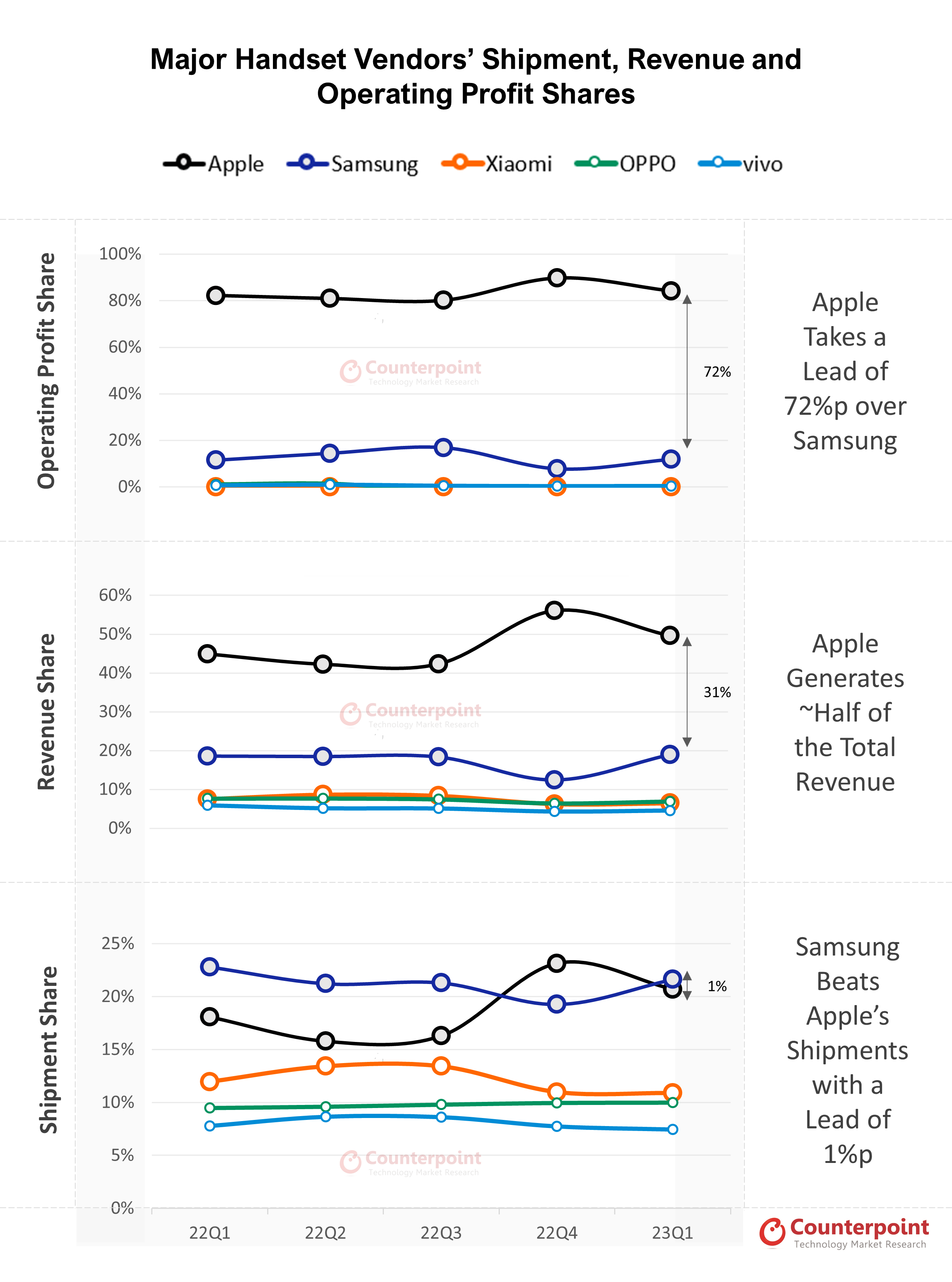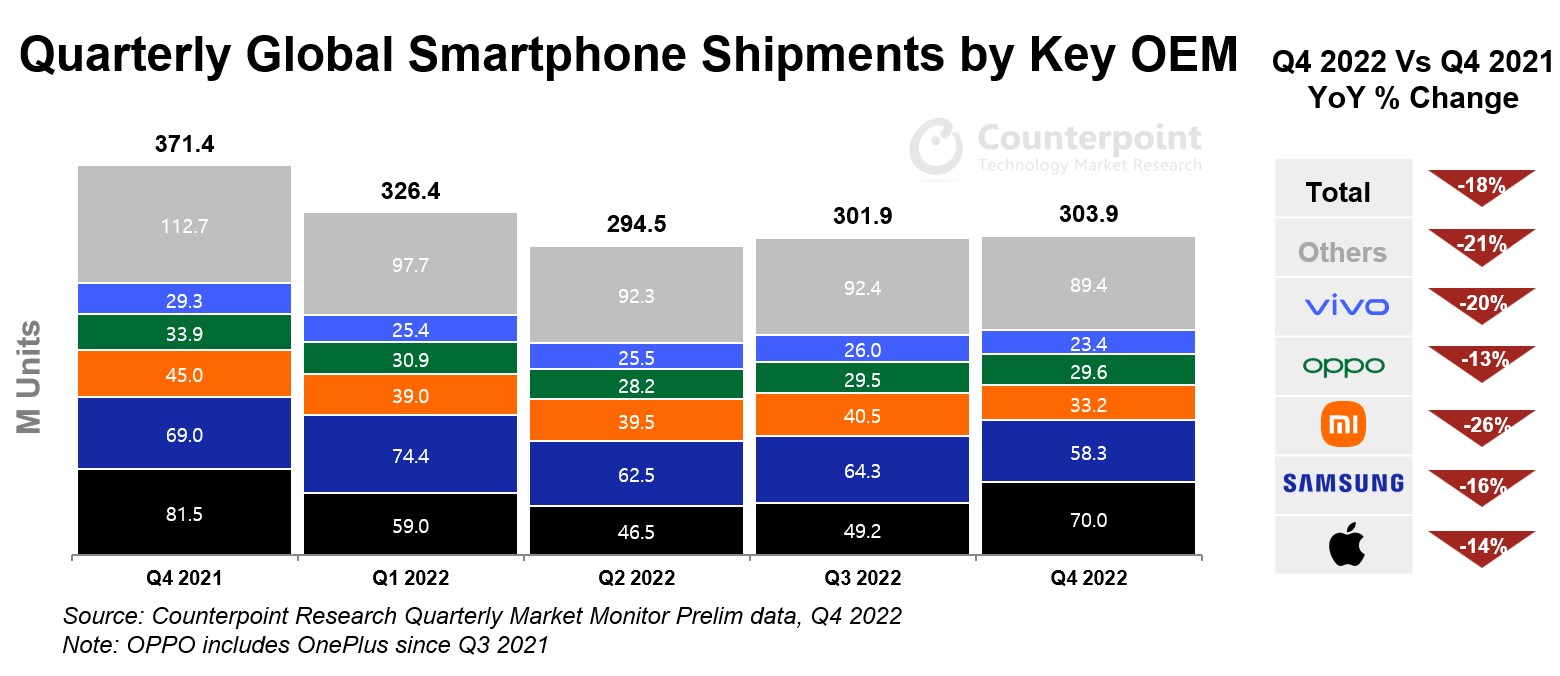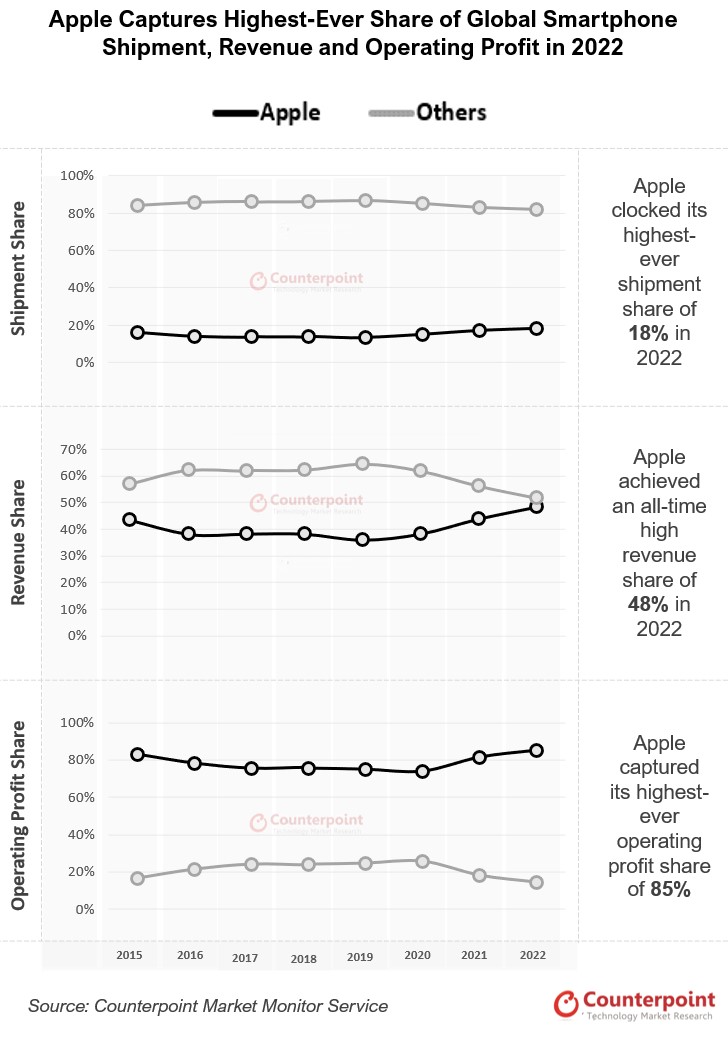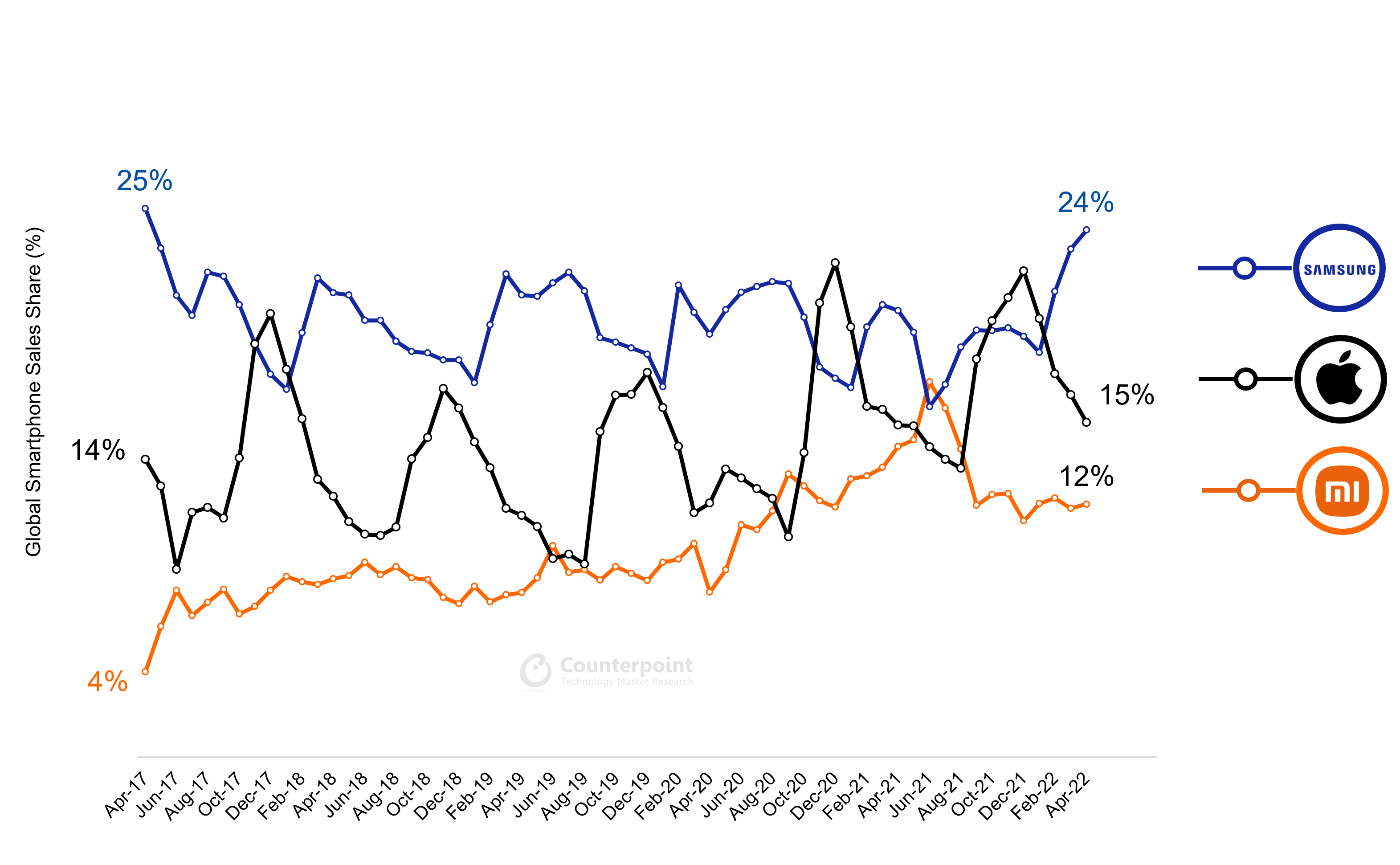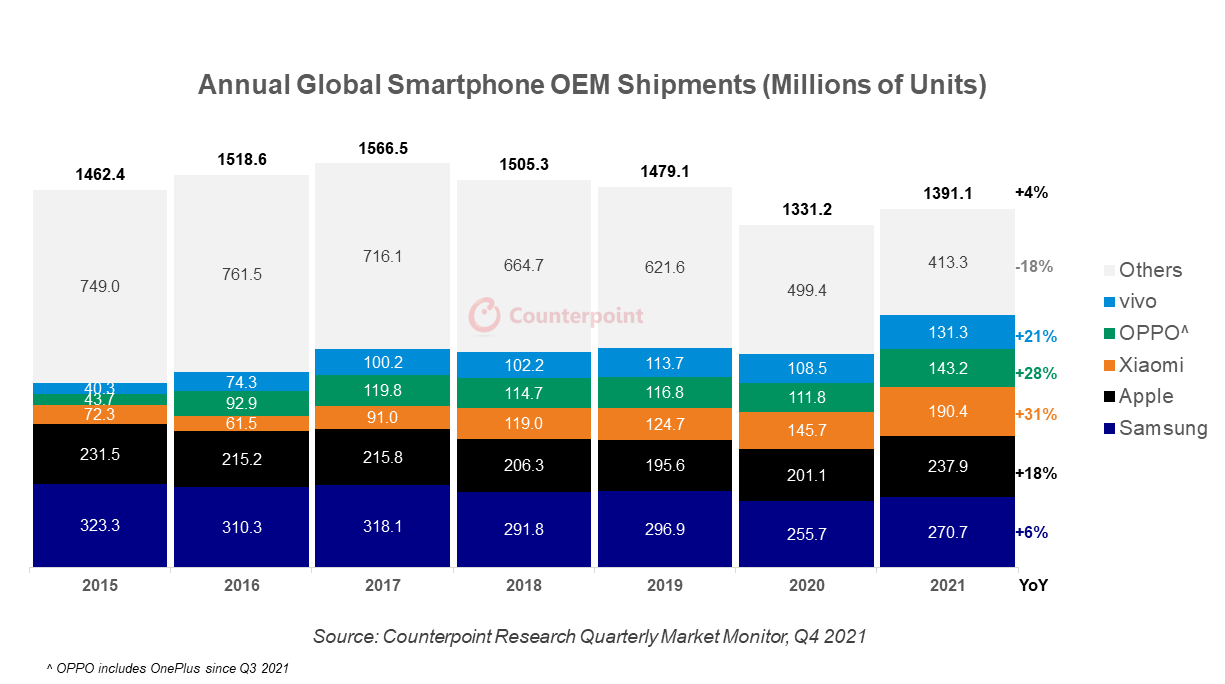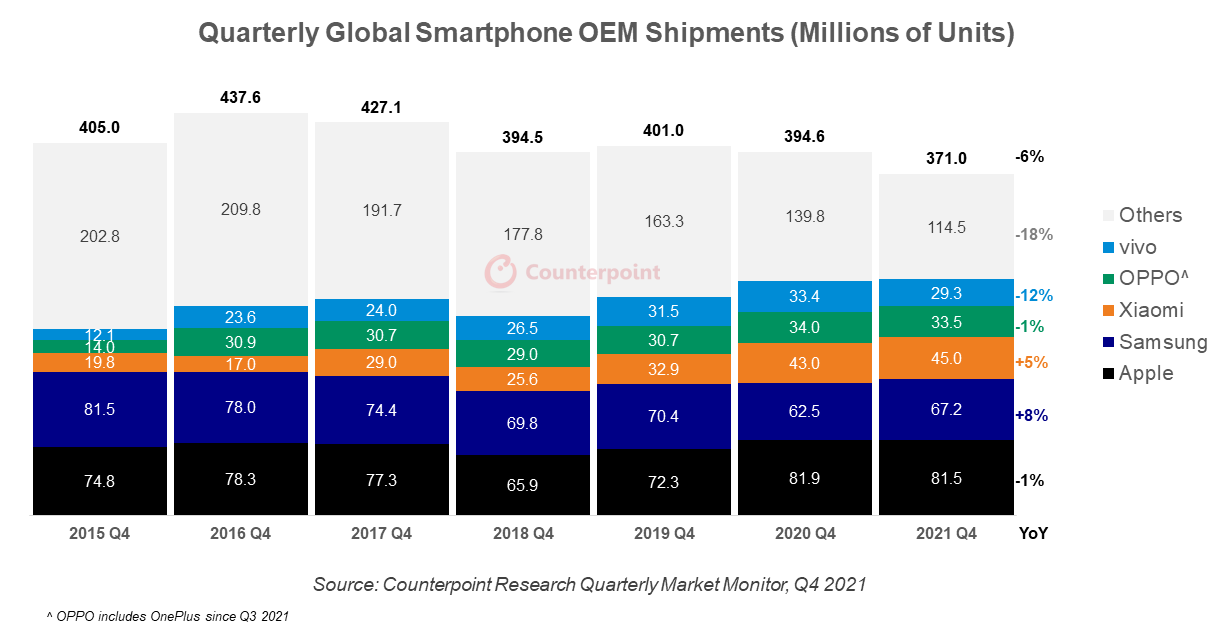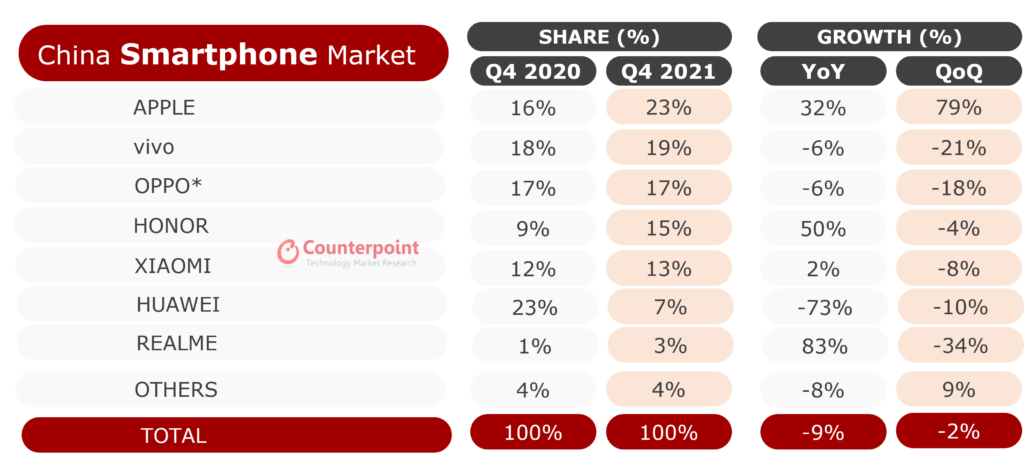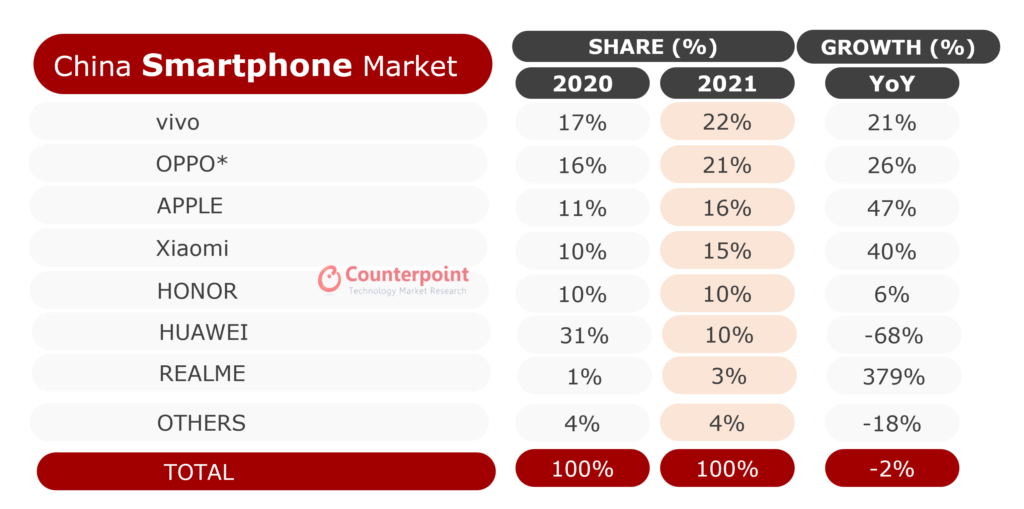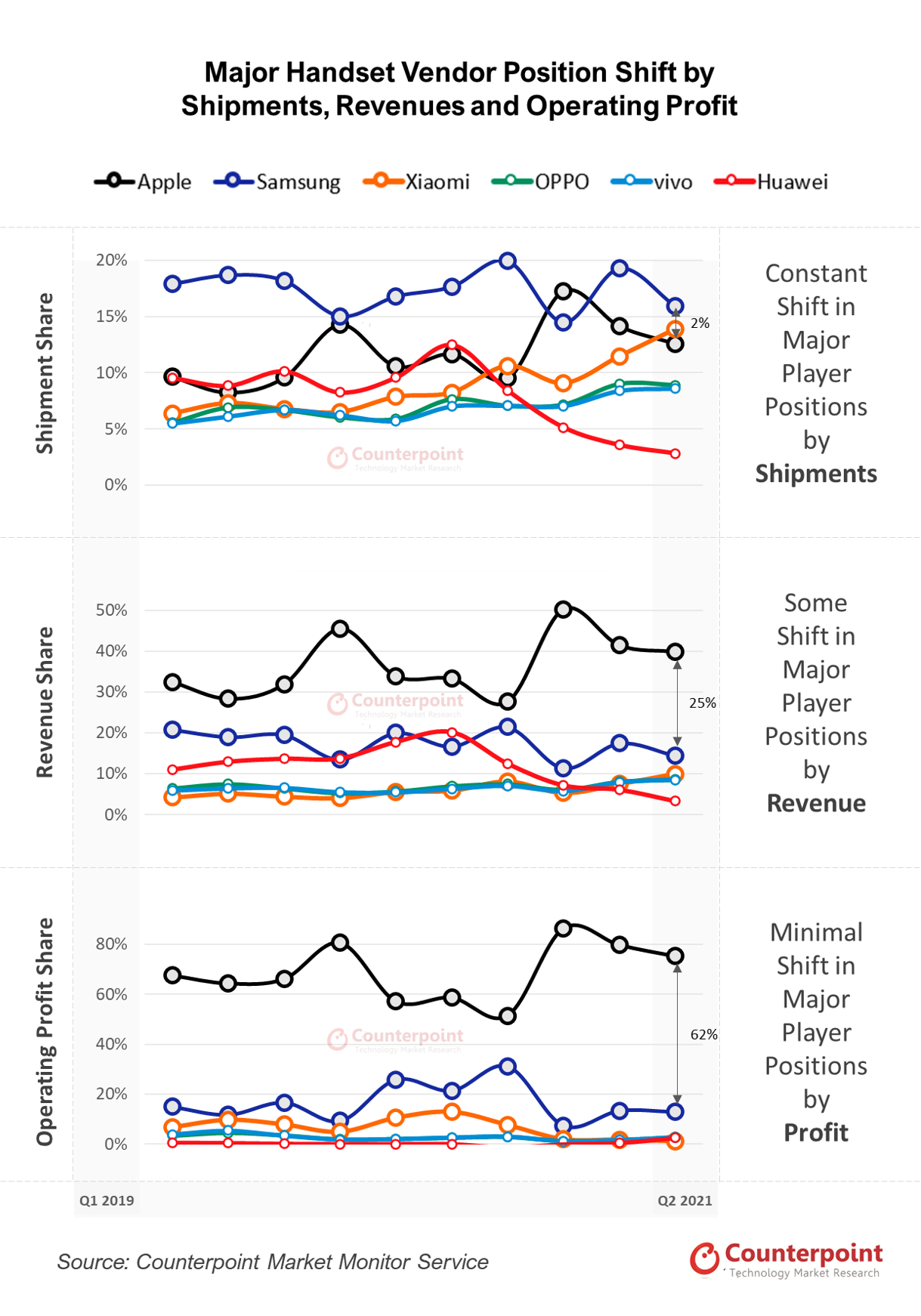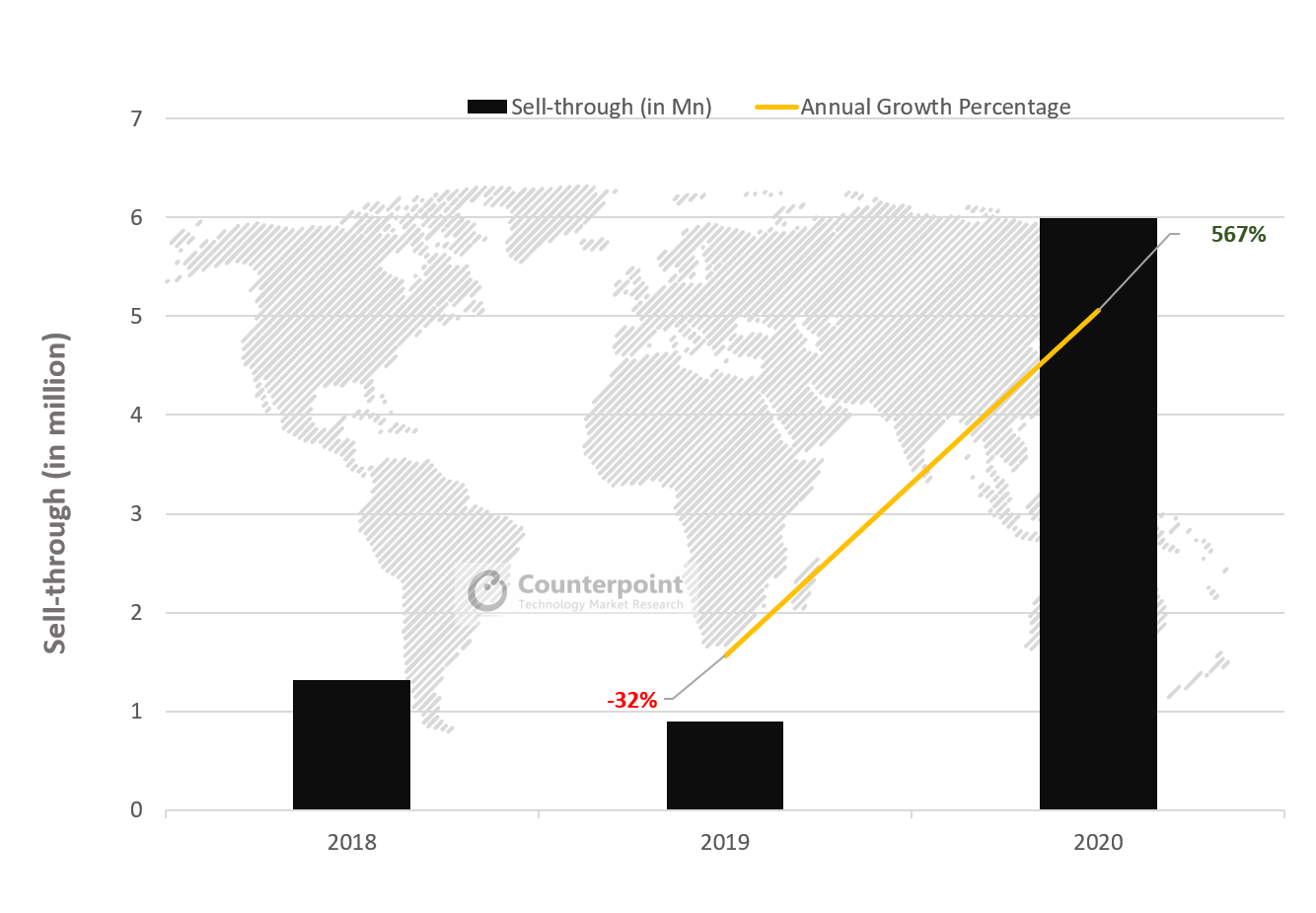- Global smartphones sell-through declined 8% YoY and 5% QoQ in Q2 2023.
- Samsung led the quarter with healthy A-series demand as Xiaomi and vivo faced headwinds.
- Apple came in second with its share growing to 17% despite unfavorable seasonal factors.
- Premium segment demand remained resilient, with the segment’s share reaching a Q2 record.
The global smartphone market’s sell-through declined 8% YoY and 5% QoQ in Q2 2023, according to the latest research from Counterpoint’sMarket Pulseservice. This was the eighth consecutive quarter to see a YoY decline.
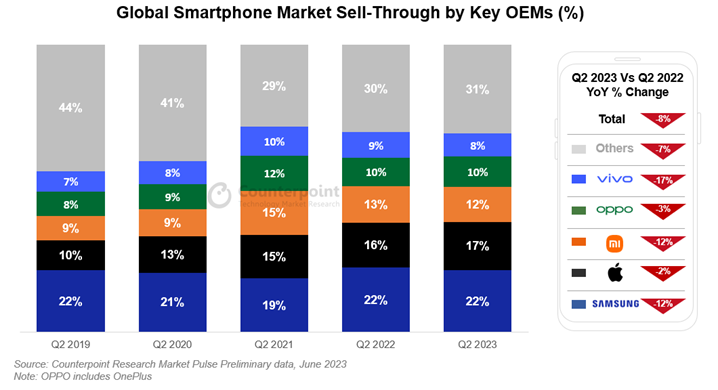
Samsungled the market with a 22% market share, benefitting from the strong performance of its Galaxy A-series globally.Applecame in second while recording its highest-ever Q2 market share.Xiaomi, the third-largest brand, faced headwinds in its biggest markets – China and India. The brand is looking to offset such declines with expansion in other markets and by refreshing its portfolio.OPPOdid relatively well in its home market China and India (thanks toOnePlus),管理其全球市场份额despite registering losses in Western Europe.vivo(includingiQOO) saw major growth declines in China after a strong Q2 last year as well as strong competition from Samsung, and OPPO in the offline markets of India andSoutheast Asia.
The global smartphone market now seems to be well past its rapid growth phase, with consumer replacement cycles getting longer, convergence in device innovation, and the emergence of a more maturerefurbished marketfor smartphones hitting particularly the higher-volume low-to-mid-tier price segment demand.
Thepremium segment($600+ wholesale price), however, continues to grow immune to broader constraints, as the mature consumer is opting for a superior experience, supported by the easy availability of finance options across key geographies. The premium segment was the only segment that grew during the quarter, reaching its highest-ever Q2 contribution to the overall market. More than one out of five smartphones sold during the quarter belonged to the premium segment.
Apple is riding this “premiumization” wave, reaching record shares in multiple new markets which are typically not considered its core markets. A prime example isIndia, where it grew 50% YoY in Q2 2023. The continued strong performance of the premium segment has made sure that revenues don’t suffer as much as sales volumes, which is why brands are investing in market expansion andinnovationin newer technologies.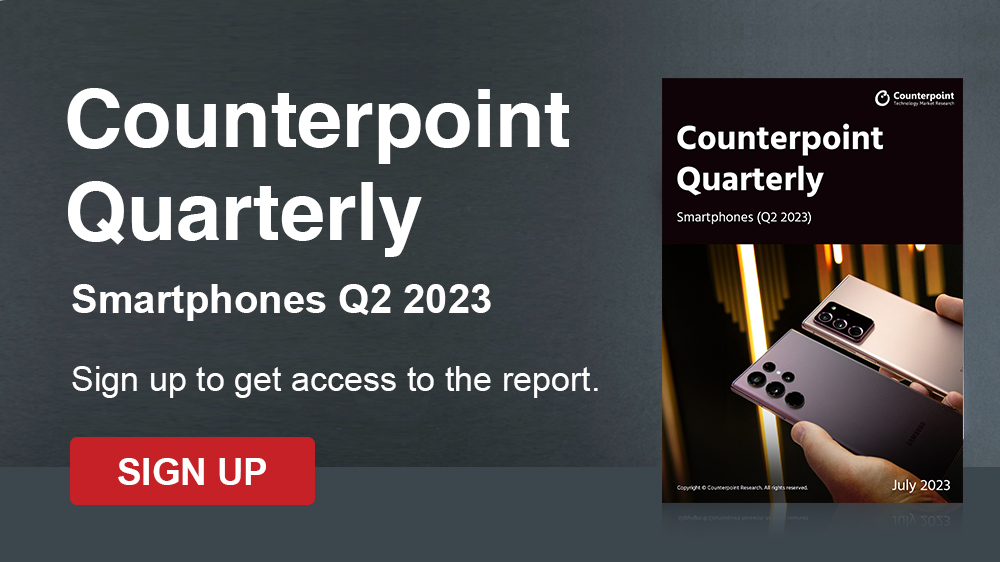
All regions worldwide saw a contraction in sales, but the biggest decline was seen in relatively more developed markets such as theUS, Western Europe andJapan, all of which recorded double-digit annual declines. The markets in China, India andMiddle East & Africa declined relatively less. OEMs and channels looked to clear the excess inventory built up in the market by leveraging promotions and “big sale” festivals. For example, the postpaid carriers in the US rejigged their unlimited bundled plans to offer more flexibility to consumers. But the demand remained weak amid higher interest rates impacting the disposable income of American households. In China too, the premier sales event of“618”, which is spread over several weeks, saw lukewarm reception despite aggressive promotions. However, the event was able to arrest the decline in the smartphone market in China and, indirectly, globally in June.
However, it is not all gloom and doom for the smartphone industry. According to ourSmartphone Inventory Tracker, the global smartphone inventory (sell-in vs sell-through) has been reaching healthy levels over the past four to five months, allowing OEMs some breathing room to launch and push newer models in the second half and attract consumers to upgrade, and accelerate the replacement cycle.
We expect the market to recover slowly in the coming quarters.
Background
市场研究是一个世界人口对位技术l research firm specializing in products in the TMT (technology, media, and telecom) industry. It services major technology and financial firms with a mix of monthly reports, customized projects, and detailed analyses of the mobile and technology markets. Its key analysts are seasoned experts in the high-tech industry.
Analyst Contacts
Ankit Malhotra
Tarun Pathak
Varun Mishra
Neil Shah
Follow Counterpoint Research



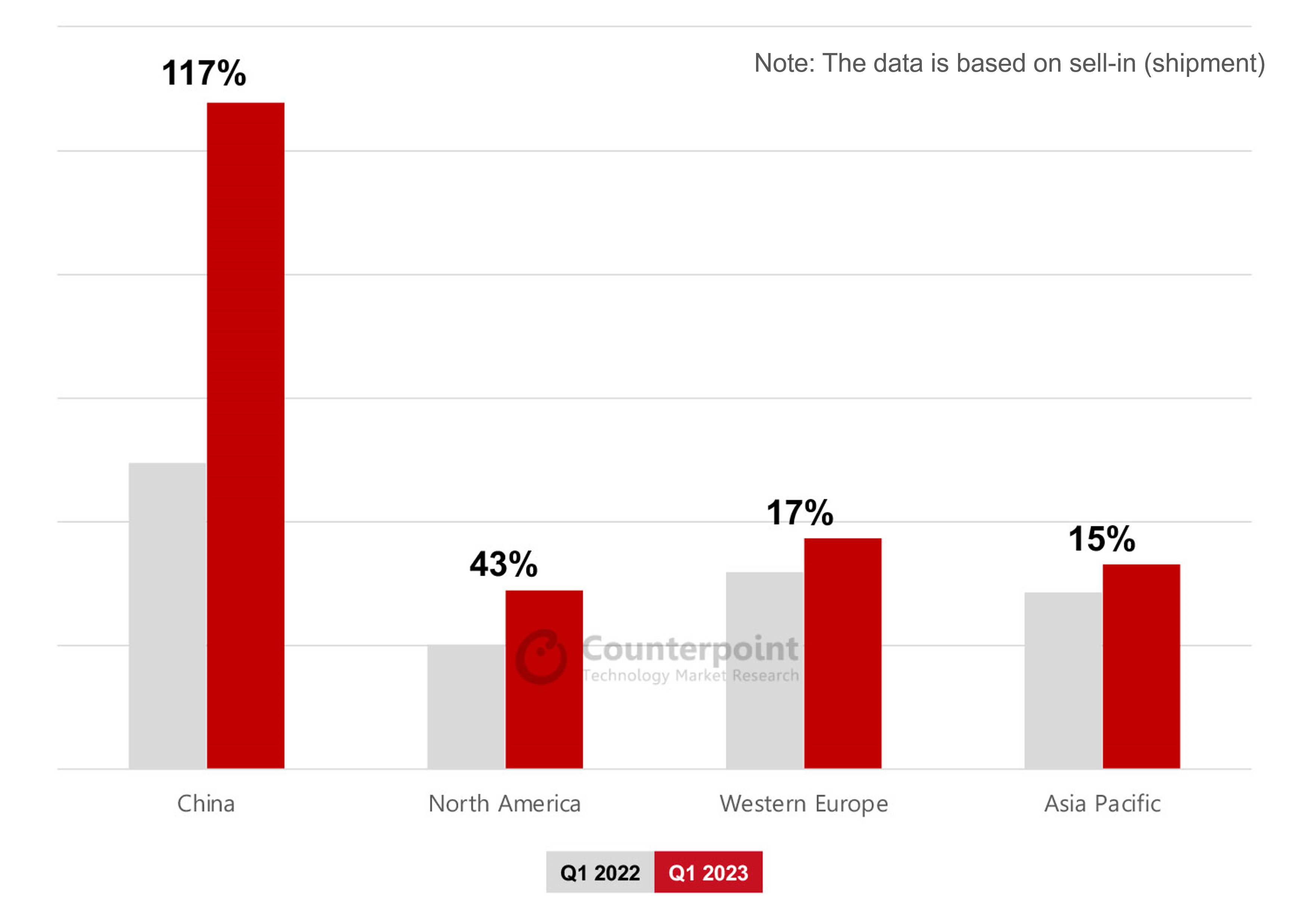 The robust growth in the global foldable market was largely driven by the growth in the Chinese foldable market. Although the Chinese smartphone market declined by about 8% YoY in Q1 2023, the domestic foldable market continued to grow, surging 117% YoY to 1.08 million units. Commenting on this phenomenon,
The robust growth in the global foldable market was largely driven by the growth in the Chinese foldable market. Although the Chinese smartphone market declined by about 8% YoY in Q1 2023, the domestic foldable market continued to grow, surging 117% YoY to 1.08 million units. Commenting on this phenomenon,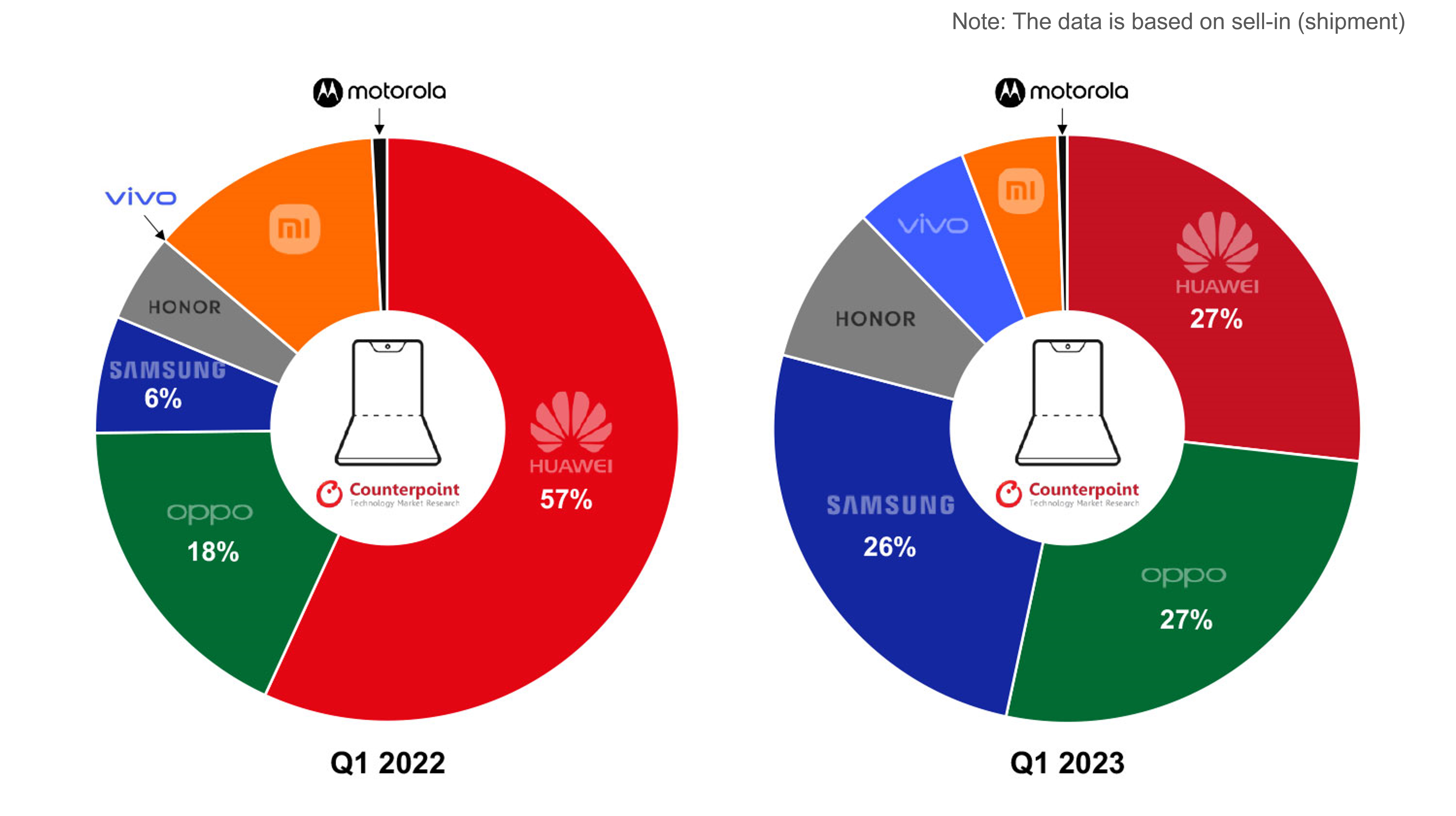 OPPO’s strong Q1 2023 performance is noteworthy as it reflects the brand’s success in the Chinese foldable market, which is emerging as the world’s largest foldable smartphone market. OPPO ranked second in the Chinese foldable market with a slight gap with leader Huawei, helped by the N2 Flip and N2 which were released at the end of 2022. In particular, the N2 Flip, OPPO’s clamshell-type foldable, contributed a lot to the increase in the sales of clamshell-type products in China, beating Huawei’s Pocket S. Samsung’s growth in the China foldable market is also noteworthy. Samsung made efforts to target the Chinese market by launching the W23 and W23 Flip, which are variants of the Z Fold 4 and Z Flip 4, respectively, produced mainly for the Chinese market and MEA market. This helped Samsung grow rapidly in the Chinese foldable market in Q1 2023. Commenting on the foldable smartphone market outlook for 2023,
OPPO’s strong Q1 2023 performance is noteworthy as it reflects the brand’s success in the Chinese foldable market, which is emerging as the world’s largest foldable smartphone market. OPPO ranked second in the Chinese foldable market with a slight gap with leader Huawei, helped by the N2 Flip and N2 which were released at the end of 2022. In particular, the N2 Flip, OPPO’s clamshell-type foldable, contributed a lot to the increase in the sales of clamshell-type products in China, beating Huawei’s Pocket S. Samsung’s growth in the China foldable market is also noteworthy. Samsung made efforts to target the Chinese market by launching the W23 and W23 Flip, which are variants of the Z Fold 4 and Z Flip 4, respectively, produced mainly for the Chinese market and MEA market. This helped Samsung grow rapidly in the Chinese foldable market in Q1 2023. Commenting on the foldable smartphone market outlook for 2023,
